Understanding how the tumor cells escape the immune system in order to grow and progress, studying cancer genetics and molecular classification of breast cancer, as well as producing radioisotopes for imaging and targeted therapy, are some of the approaches applied by Scientia Fellows in their projects below to gain novel insight in the fight of cancer.
Anindita Bhattacharya
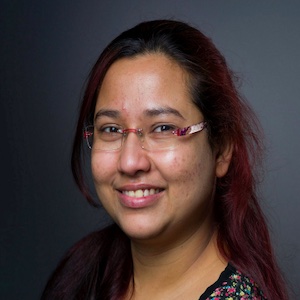
Country of origin: India
Host: Per Morten Sandset
Thematic area: Coagulation Disorder specifically antithrombin deficiency
Project title: Developing cell-based therapy for coagulation factor deficiencies
My project
Coagulation factor deficiencies are caused for mutations in the corresponding coagulation factor gene. Due to the genetic nature of the disease, no preventive measures are available, and the only possible treatment is replacement therapy. Among a plethora of coagulation disorder reported till date, Antithrombin (AT) deficiency is very popular leading to deep vein thrombosis, pulmonary embolism etc. Our main objective is to develop a cell-based treatment strategy for patients with AT deficiency involving gene editing and cell engineering to correct AT expression and function in patient-derived cells with subsequent autologous transplantation in immunodeficient mouse to restore AT activity.
Due to the genetic nature of the coagulation diseases, no preventive measures are available. This project will create possibilities for modeling coagulation factor deficiencies using both an organoid model and murine models that reflect the physiological aspects of the coagulation factors in the cells that naturally synthesize these factors, liver cells.
Dan Liu

Country of origin: China
Host: Tor Erik Rusten
Group: Department of Molecular Cell Biology, Institute for Cancer Research
Thematic area: Cancer cell biology
Project title: Unraveling mechanisms of tumor-induced tissue wasting.
My project
Up to 80% of late stage cancer patients suffer from cachexia with catastrophic loss of muscle and fat tissue. The syndrome is characterized by systemic inflammation, metabolic reprogramming and exhaustion. This reduces the quality of life, and precludes chemotherapy. The mechanisms of cachexia are poorly understood and no effective therapy to limit or cure cachexia exists.
The overarching aim is to provide insights into the cellular mechanisms of tumor-induced muscle wasting. We use the fruit fly, Drosophila melanogaster as a powerful model to identify key nodes of atrophy regulation through measuring muscle-specific transcriptional changes during wasting and targeted tissue-specific RNAi-mediated genetic screen.
Finally, cell biological mechanisms of tumor-induced wasting will be studied in Drosophila and translated to a mammalian myotube model of muscle wasting. Results obtained are expected to reveal new mechanistic insights into tissue wasting that may form a basis for future cancer management.
Erika Morera Mojonero
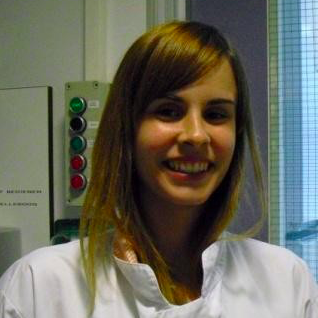
Country of origin: Spain
Host: Vessela Kristensen
Group: Vessela Kristensen's group
Thematic area: Breast cancer and immunotherapy
Project title: Copy number alterations in immunotherapy in breast cancer
My project
Breast cancer (BC) is the most prevalent cancer type in women worldwide. Molecular classification of BCs indicates specific treatment modalities, but there are BCs that are still difficult to treat.
To get a better understanding of this fact, I will study the copy number alterations (CNAs) that are followed by genomic instability in breast tumors. Furthermore, I will study if there is a correlation between CNAs and the crosstalk between BCs and cells of the microenvironment.
These heterotypic interactions can be relevant targets to sensitize tumors to immune therapies.
There is an urgent need to provide options for patients with difficult BCs to treat. In this project, we will study the biological meaning of heterotypic interactions between breast cancer cells and cells surrounding the stroma and explore the clinical relevance for therapeutic purposes and improve treatments.
Finding a critical developmental period where cognitive maturation is vulnerable to sleep manipulation may give a new research direction for the treatment of neurodevelopmental disorders.
Frans Suurs
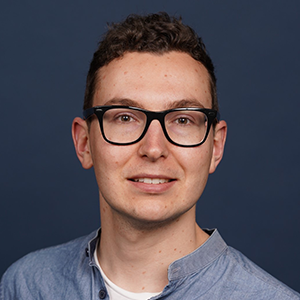
Country of origin: The Netherlands
Host: Kjersti Flatmark
Group: Tumor Biology
Thematic area: Cancer biology and biochemistry
Project title: A theranostic approach to the identification and treatment of colorectal cancer liver metastases in orthotopic mouse models
My project
Colorectal cancer is a leading cause of tumor-related morbidity and mortality worldwide. Around half of all patients with colorectal cancer will develop liver metastasis. However, many patients will not be eligible for surgery and will require other treatment forms for management of their disease. Targeted alpha therapy (TAT) is a new treatment modality based on the delivery of radioisotopes to the surface of tumor cells using antibodies which specifically bind to proteins expressed on the surface of tumor cells. In combination with a molecular diagnostic utilizing the same antibody, we may establish a pairing suitable for developing a "theranostic approach" to patient management using PET or SPECT imaging in addition to TAT.
Using molecular imaging to develop and evaluate TAT may facilitate its transition to the clinic, and will provide insight into the disease as well as this novel therapeutic strategy.
Kevin Ching Wei Li

Country of origin: South Africa
Host: Sunniva Siem
Group: Nuclear Physics
Thematic area: Medical radioisotopes and cell-damage simulations
Project title: Studying novel radioisotopes and the simulation of cell damage and photosensitizers.
My project
Currently, most prevalent cancer treatments manifest a scale of biological damage to the human body which often rivals that of the cancer itself. Research into novel medical radionuclides, which enable a drastically reduced radiation does to the patient, will present a different regime in cancer treatment. Studying the production of such radionuclides is crucial as the limited access to clinically-relevant quantities is the primary reason this medical research is being impeded. Another topic of this our research is the simulation of cell damage, which may ultimately provide better models of medical treatments.
Research into novel medical radionuclides will present a different regime in cancer treatment as such radionuclides enable a drastically reduced radiation dose to the patient. Simulations assist our understanding cell-damage to ultimately provide better models of medical treatments.
Marta Sanz Gaitero
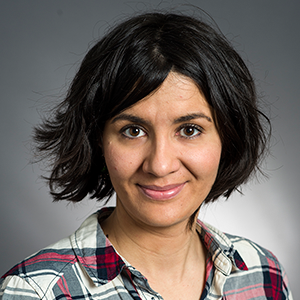
Country of origin: Spain
Host: Hartmut Luecke
Group: Centre for Molecular Medicine Norway (NCMM)
Thematic area: Gastric cancer therapy: Helicobacter pylori eradication
Project title: Structure-Function studies and inhibitor discovery targeting the cytoplasmic urease from H. pylori
My project
Helicobacter pylori infects about 50% of the world’s population, being chronic colonization of the stomach associated with several gastric diseases, including gastric carcinoma.
H. pylori is able to colonize the acidic environment of the mammalian stomach via the mechanism of acid acclimation, involving a proton-gated plasma-membrane urea channel and a urease that hydrolyses urea into NH3 and CO2, that buffer the low pH caused by gastric acid, allowing the bacteria to survive. The effectivity of 25 previously-identified urease inhibitors to reduce the growth of live H. pylori in low pH conditions will be tested. The mechanism of action of these compounds will be elucidated and the possible adverse effects of these compounds will be determined.
Meng Pan
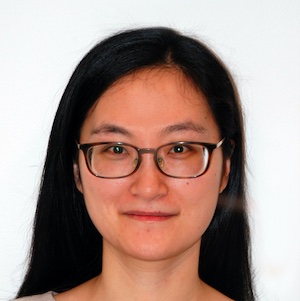
Country of origin: China
Host: Kay Oliver Schink
Group: Harald Stenmark’s lab at the Department for Molecular Cell Biology at the Institute for Cancer Research, The Norwegian Radium Hospital
Thematic area: Mechanobiology, molecular cell biology
Project title: Molecular and biophysical regulation of lipid, actin and GTPases in macropinocytosis
My project
Cells drink fluids from its outer environment in a process called macropinocytosis. It is important for immune cells to recognize outside dangers from the fluids. This process is also active in certain tumor cells which use it to thrive in nutrient-deficient microenvironments.
Macropinocytosis originates from the actin-rich membrane ruffles. These ruffles can form cup-shape structures, constrict and pinch off to become fluid-filled vesicles called macropinosomes. The process of macropinocytosis is tightly controlled by phosphoinositides and the actin cytoskeleton and involves regulations from actin binding proteins and enzymes called small GTPases. So far, little is known about how macropinosomes are formed.
To decipher the formation mechanisms, I will establish micropatterning and other mechanobiology methods. I will constrain cells in defined shapes, measure the membrane tensions and fluidity, and identify the biological and physical determinants for macropinocytosis.
This work will lead to the advanced understanding of the macropinocytosis formation mechanisms and contribute to cancer research and drug discoveries. The repetitive nature of micropatterns and biophysical measurements will allow more researchers to gain quantitative insights into other life science studies.
Nuria García Díaz
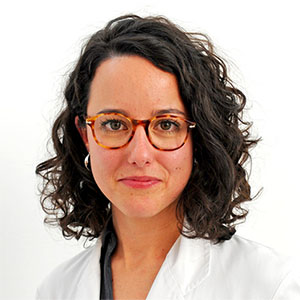
Country of origin: Spain
Host: Kjetil Taskén
Group: Cell Signalling and Immune Regulation group
Thematic area: Cancer Immunology
Project title: Targeting the suppressive function of regulatory T cells to restore antitumor immunity.
My project
In response to pathogens, the human body activates the autoimmunity regulation controlled by immune suppressive mechanisms to minimize inflammation and tissue damage. These mechanisms can be hijacked by tumour cells resulting in the activation of the immune escape. The role of regulatory T cells (Tregs) in this process is well described but their mode of action and downstream effectors are less known and drug targeting efforts have not been successful. Understanding how Tregs activation affects different downstream signalling pathways and the identification of potential compounds that can modulate this activity will open new therapeutic avenues in immunotherapy.
The activation and regulation of the immune system is an essential biological process that affects the whole field of medicine. In the future, precision immunotherapy for the individual patient, including Treg-targeted therapy, might be established based on knowledge gained in this project.
Rakesh Kumar Majhi

Country of origin: India
Host: Karl-Johan Malmberg
Group: Natural Killer cell biology and cell therapy
Thematic area: Cancer Immunology
Project title: Characterization of the biochemical pathways regulating signaling from acidic Ca2+ stores inside NK cells (INSIDE-NK)
My project
Natural Killer (NK) cells can selectively eliminate cancer cells, as they can distinguish between healthy and cancer cells. Understanding how NK cells are educated to deliver fine-tuned anti-cancer responses is critical to develop new NK-cell-based therapies
During NK cell education, the secretory lysosomes undergo structural remodeling and a lysosomal ion channel is critical in this process. In INSIDE-NK, we will explore the calcium signaling mechanisms of lysosomes that regulate NK cell maturation, migration and fusion of lytic molecules to NK - cancer cell contact sites.
This project will contribute to increase the functional efficacy of NK cells, by triggering specific pathways, which can be harnessed in anti-cancer therapy.
Tamás Gábor Tornyi

Country of origin: Hungary
Host: Sunniva Siem
Group: Nuclear Physics
Thematic area: Medical isotopes
Project title: Searching for new methods in medical isotope production
My project
The need for stable, safe and economically affordable production methods of medically used radioisotopes has increased substantially in the past couple of decades. The supply of the most widely used radioisotopes in medicine are mainly produced by nuclear research reactors. These entities are being decommissioned at an increasing rate due to public concern of proliferation of nuclear weapons and scepticism towards nuclear reactors in general. To solve this problem we need to develop alternative production methods for medical isotopes. This project is aiming to expand and exploit the existing infrastructure for production of radioisotopes for imaging and therapy.
More cost effective and environmentally friendly production of medical isotopes will lead to higher availability. In the longer term, increased availability and a larger variety of medical isotopes at lower cost will lead to better health care.
Parastoo Shahrouzi

Country of origin: Iran
Hosts: Professor Vessela Kristensen
Group: Oslo University hospital, Laboratory medicine, Department of medical genetics
Thematic area: Genomic instability, targeted cancer treatment
Project title: Harnessing copy number alterations as an emerging area in the treatment of breast cancer
My project
Breast cancer (BC) is the most common cancer in women worldwide. Molecular classification of BCs has provided patients with more personalized therapy options. However, subgroups of patients are still difficult to treat. Hence, there is an urgent need for treatment improvements. Copy number alterations (CNAs) contribute to genomic instability, which is a leading cause of both inter- and intra-tumour heterogeneity. In my project, we take advantage of the observations from our recently developed machine learning method to explore whether specific focal CNAs, including loss of chromosome regions increase the sensitivity of BC cells to specific drugs.
The results from my project may be translated into clinical trials aimed at improving the treatment of BCa patients which may prevent overtreatment and unnecessary side effects. As such, it could not only provide physical health benefits, but also reduce the psychological and socioeconomic impacts of the disease, as well as the effects of modification on appearance and sexuality.
Øyvind Ødegård Fougner

Country of origin: Norway
Host: Kay Oliver Schink
Group: Harald Stenmark’s lab at the Department for Molecular Cell Biology at the Institute for Cancer Research, The Norwegian Radium Hospital
Thematic area: Microscopy and labelling of biomolecules
Project title: A nanoscale map of the protein landscape in endocytosis with barcoded antibodies.
My project
Molecular processes are often driven by the coordinated effort of tens, or even hundreds of different proteins. Microscopy and fluorescently labelled antibodies can be used to determine the location of a protein, but it is not trivial to image more than 2-3 proteins in the same cell. To overcome this limitation, I develop labelling strategies that can be used to visualize tens or even hundreds of proteins in the same cell. To achieve this, I attach small DNA “barcodes” to antibodies and use it to find the location of all proteins in a molecular process such as endosome fusion.
This work can give both researchers and the medical community a tool that can be tailored to their specific needs. It can be used to speed up the characterization of a molecular pathway, or to detect protein location in diseased cells.
Wioletta Brankiewicz
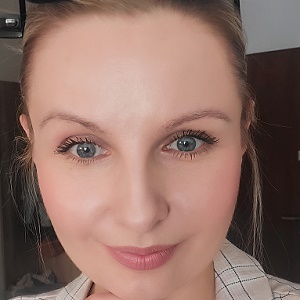
Country of origin: Poland
Hosts: Professor Vessela Kristensen
Group: Vessela Kristensen's group
Thematic area: Molecular and cell biology, Carcinogenesis, Systems medicine in 3D culture
Project title: Contribution of adipocytes in the tumor microenvironment as a novel strategy in breast cancer therapy
My project
The tumor microenvironment (TME) is a heterogeneous ecosystem composed of infiltrating immune cells, mesenchymal support cells, and matrix components contributing to tumor progression. Adipocytes are the primary cellular component comprising the breast cancer (BC) microenvironment. Cancer-associated adipocytes (CAAs) are not only found adjacent to cancer cells, but can also influence cancer cells by releasing various factors that result in enhanced tumor progression and resistance to treatment. Thus, CAAs are an attractive research target for the identification of signatures and biomarkers of cancer progression.
We will focus on the analysis of multi-omics data: lipidomics, metabolomics and expression data of CAAs and tumor cells in BC. These comprehensive strategies are expected to guide clinical studies, thus improving current breast BC diagnosis and medical treatments.